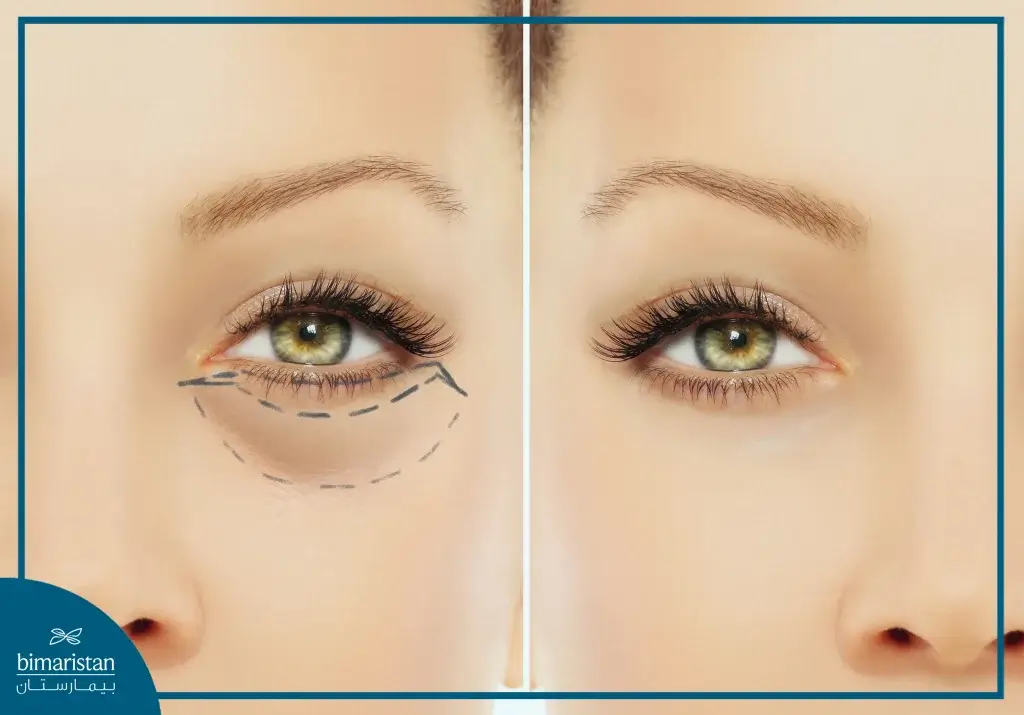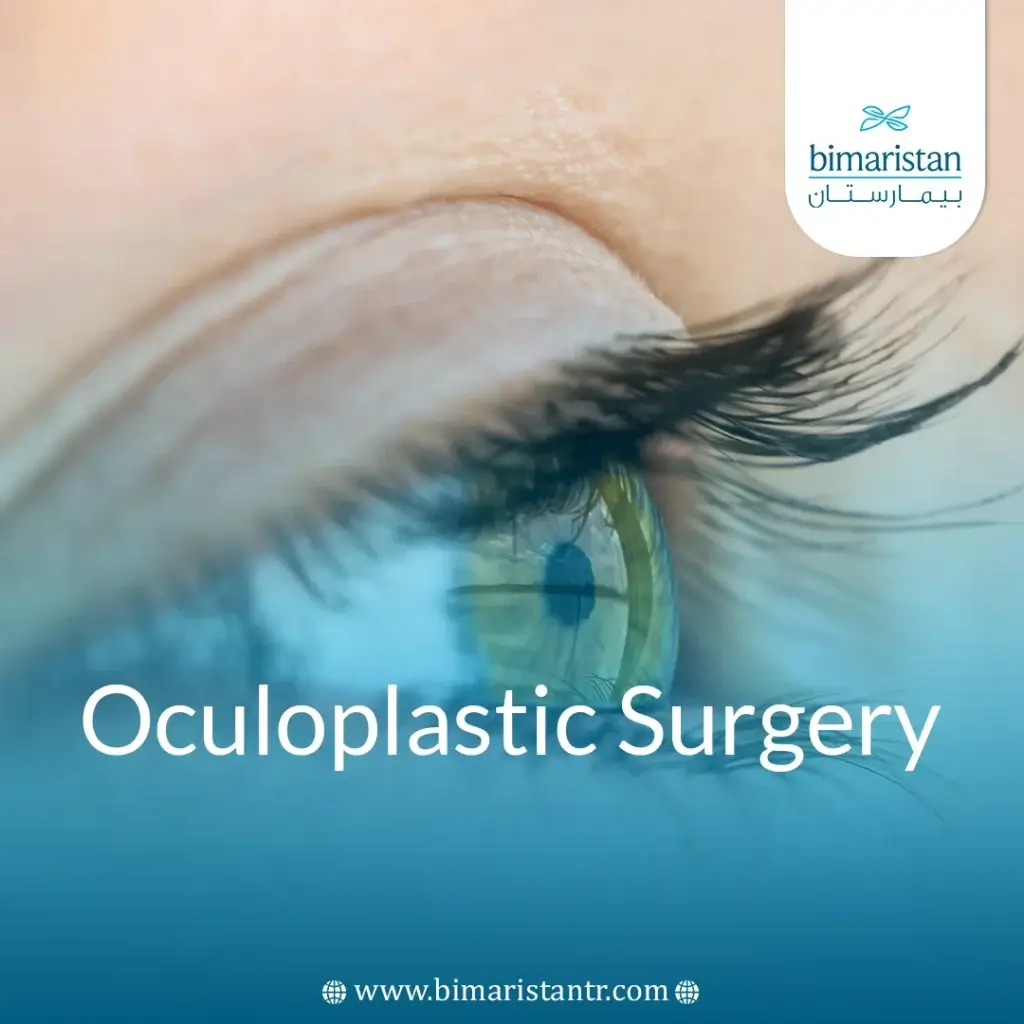Oculoplastic surgery is the ideal option for improving the appearance of the eye area and addressing certain medical issues that affect appearance or function. Whether you suffer from droopy eyelids or fatty bags under the eyes, or need to improve the shape of your eyes, oculoplastic surgery offers effective solutions that combine beauty and health. In this article, we’ll cover everything about oculoplastic surgery, from types and steps to recovery time and expected benefits.
Indications for oculoplastic surgery
The eyes are the center of attention on our faces, and many people turn to cosmetic eye surgery for several common conditions:
- Drooping upper eyelid or lower eyelid conditions that may impede vision or affect a person’s appearance by making them look tired all the time.
- Having eye issues affects a person’s aesthetics and overall appearance
- When there are sebaceous cysts or swellings under the eyes
- Medical issues in the eye, such as eyelid tumors
- Blocked tear ducts
Types of oculoplastic surgery
The most common oculoplastic surgery procedures include the following:
- Lacrimal duct surgery (DCR): A surgical procedure that creates a new pathway for tears to drain between the eyes and nose to treat chronic blockages.
- Eyebrow lifting: A brow lift aims to correct lines and wrinkles around the eyes that can make a person look angry, tired, or sad, thus restoring facial definition and improving overall appearance.
- Blepharoplasty for the upper and lower eyelids: A cosmetic procedure that aims to make the eye area (or around the eye) look more youthful by removing excess skin, muscle, or fat from the upper or lower eyelids.
- Ocular angle adjustment (Canthoplasty and Canthopexy): Both treatments aim to tighten or reposition the outer corners of the eye, but they use slightly different techniques. Canthoplasty is a less invasive procedure that uses invisible stitches to reposition and strengthen the outer corner of the eye, while Canthopexy is more complex, requiring muscles and tendons to be cut and shortened.
- Tumors (cancer)
- Reconstructive surgery after cancer surgery

Steps during oculoplastic surgery
Oculoplastic surgery is a delicate surgery that requires the surgeon’s expertise and precision, as the steps include:
- Anesthesia: Medications are given to ensure the patient’s comfort during the surgery, and the options include intravenous anesthesia or general anesthesia, and the doctor decides the most appropriate option.
- Small incisions are made in the natural folds of the skin: The incision lines are made in such a way that the resulting scars are well hidden within the natural structure of the wound area.
- Removing excess skin or fat and tightening muscles as needed, depending on the goal of the surgery.
- Closing the incisions: Eyelid incisions are usually closed with sutures or skin glue to ensure quick healing and minimize scarring, and the stitches are removed within one week.
Recovery and beyond
Full recovery after oculoplastic surgery may take between two to four weeks. During the first 48 hours, the person may feel discomfort, mild swelling, and bruising, but these symptoms usually subside. It is recommended to use cold compresses to reduce swelling and bruising. It is also normal for the eyes to appear uneven or vary in size during the recovery period; this typically resolves as the swelling decreases, so there is no need to worry.
The doctor may advise resting for a week after surgery before returning to work or study. Most patients can resume light activities within a week. After the operation, it is important to avoid sun exposure and not to rub the eye. The final results of the oculoplastic surgery will gradually appear within 2 to 4 weeks.
Benefits and expected results of oculoplastic surgery
Oculoplastic surgery offers many benefits, including:
- Improving the appearance of the eye and the shape of the eyelid, so the eye looks more beautiful, for example, after an eyebrow lift.
- Feeling more self-confident as the person looks younger and more comfortable.
- Widening the field of vision when there is ptosis.
Potential complications and risks of oculoplastic surgery
Although surgery is generally safe, in some cases, rare risks of oculoplastic surgery may occur, such as
- Infection, inflammation, and bleeding
- noticeable scarring
- Dry and irritated eyes
- Eye muscle injury
- Skin discoloration
- Difficulty closing the eyes or other eyelid issues, such as asymmetry in the eyelids
- Temporary blurring of vision, or in rare cases, loss of vision, and the need for subsequent surgery.
Therefore, it is advisable to choose a specialized surgeon and follow up closely for the best results and to ensure the restoration of eye vitality.
In conclusion, oculoplastic surgery is an excellent option for those who wish to improve the appearance of the eye and treat eye-related health issues. With modern techniques and specialized surgeons, it is possible to achieve amazing results that combine beauty and health. If you are considering this surgery, be sure to consult with a specialized surgeon to ensure you get the best results safely and effectively.
For more information or to book a consultation, contact us now and enjoy amazing results that bring out the best in you!
Sources:
- NHS. (2023, September 15). Eyelid surgery
- Moorfields Eye Hospital. (2024). Cosmetic and oculoplastic. Moorfields Private.
